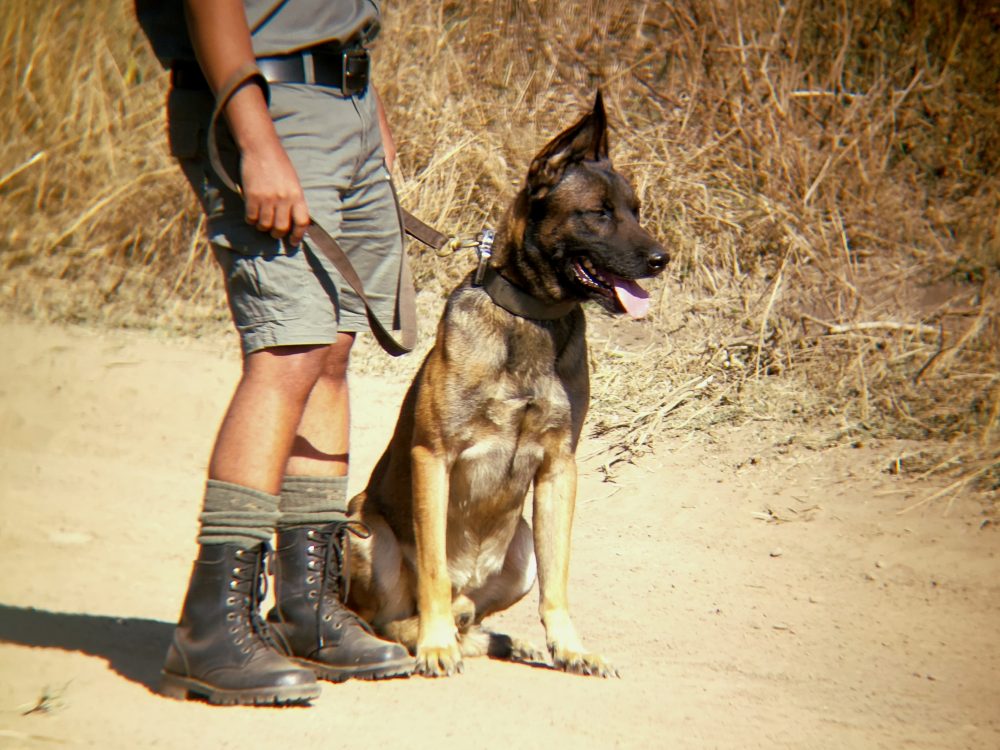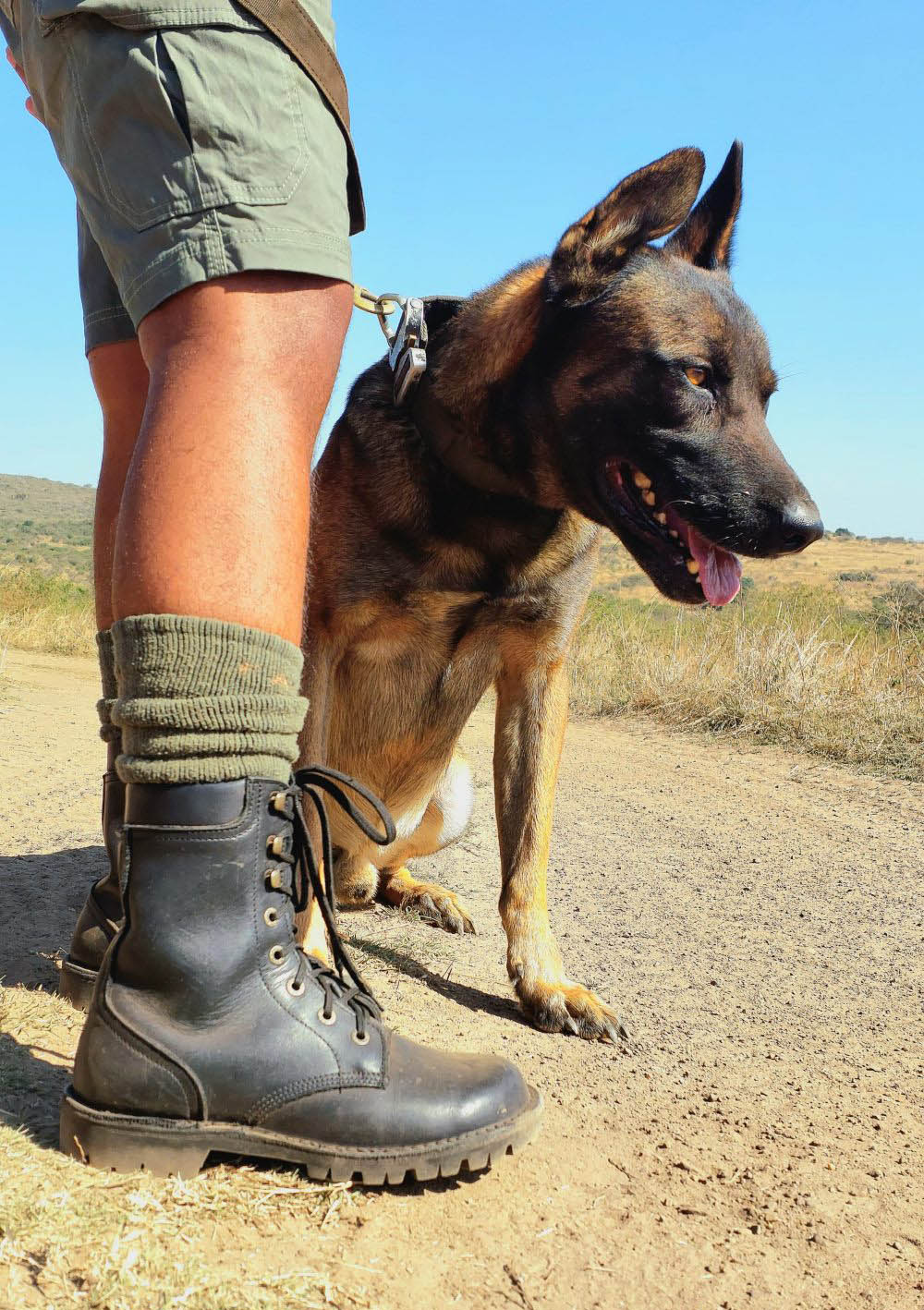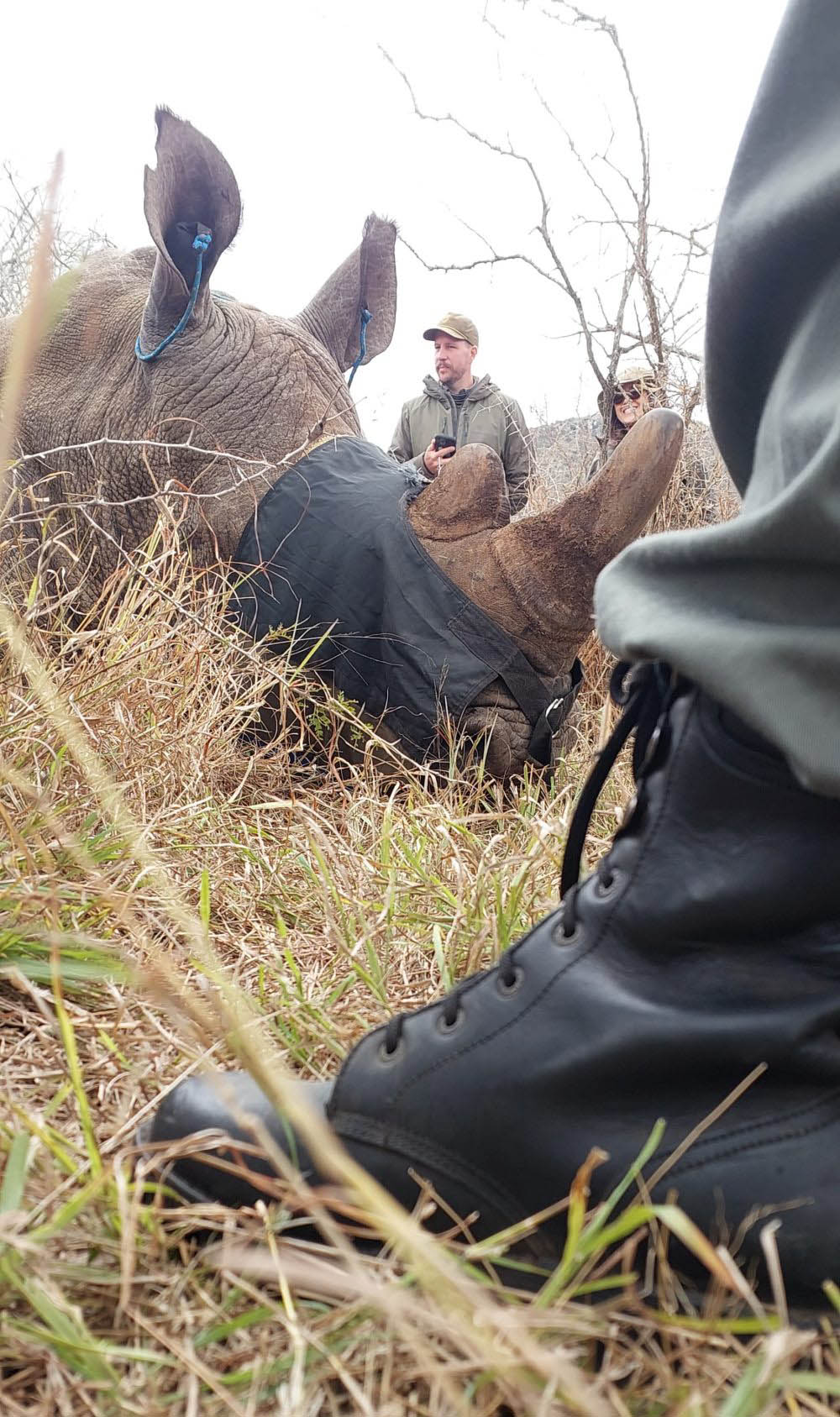Jim Green boots were delivered to Project Rhino to support people like Moses Makalima, a field ranger and K9 handler. “The work we do is tough,” Moses says. “You don’t always know what you’re walking into. But having proper boots and uniforms gives you confidence. It makes a difference knowing you’re equipped for the conditions.”
 While each ranger works under different conditions, durable and reliable footwear remains an important part of ensuring safety and comfort during long hours protecting a critical stronghold for the southern white rhino.
While each ranger works under different conditions, durable and reliable footwear remains an important part of ensuring safety and comfort during long hours protecting a critical stronghold for the southern white rhino.
“Anti-poaching operations are mentally intense and logistically complex,” explains Carlien Roodt, Director and Chief Operations Officer of Project Rhino. “They involve overnight deployments and coordinated action between teams—K9 units, aerial surveillance, vehicle patrols, and field support. It’s a demanding environment that requires proper gear and preparation.”
 KwaZulu-Natal has long played a central role in rhino conservation. In the late 19th century, it was believed that southern white rhinos had gone extinct until a small population of around 100 was discovered. Thanks to decades of conservation work, the species has made a remarkable recovery and is now classified as ‘near threatened,’ with an estimated population of around 12,900.
KwaZulu-Natal has long played a central role in rhino conservation. In the late 19th century, it was believed that southern white rhinos had gone extinct until a small population of around 100 was discovered. Thanks to decades of conservation work, the species has made a remarkable recovery and is now classified as ‘near threatened,’ with an estimated population of around 12,900.
 KwaZulu-Natal’s parks and reserves, such as Hluhluwe-iMfolozi, were at the heart of that comeback, and they remain key to the species’ survival today, even as the region faces intense poaching pressure.
KwaZulu-Natal’s parks and reserves, such as Hluhluwe-iMfolozi, were at the heart of that comeback, and they remain key to the species’ survival today, even as the region faces intense poaching pressure.
Project Rhino, launched in 2011, brings together a wide network of organisations and individuals committed to rhino conservation. Their approach is built on a simple premise: collaboration is essential. “What makes Project Rhino’s model unique is its focus on collaboration over competition,” says Roodt. “Whether it’s law enforcement, community engagement, ranger training, or youth education, we align diverse efforts under a shared strategy.”
 Looking ahead, Project Rhino’s goals remain focused on strengthening on-the-ground conservation. Priorities for 2025 include continued ranger wellness and training support, growing youth engagement through programmes like Rhino Art (considered to be the most successful youth-art conservation initiative ever undertaken), expanding community conservation initiatives, and improving intelligence-sharing across organisations and borders.
Looking ahead, Project Rhino’s goals remain focused on strengthening on-the-ground conservation. Priorities for 2025 include continued ranger wellness and training support, growing youth engagement through programmes like Rhino Art (considered to be the most successful youth-art conservation initiative ever undertaken), expanding community conservation initiatives, and improving intelligence-sharing across organisations and borders.
“What inspires me most,” Roodt adds, “is the dedication of the people doing the work, rangers, educators, community leaders, and young people. They’re the reason this work continues.”
Cheers,
The Jim Green Team
Through our Boots for Rangers initiative, run in partnership with the Game Rangers Association of Africa, we donate one pair of boots to a ranger for every ten pairs sold from our Ranger range. These boots are now supporting conservation teams at sites across Africa, with over 6,000 pairs already on the ground.



